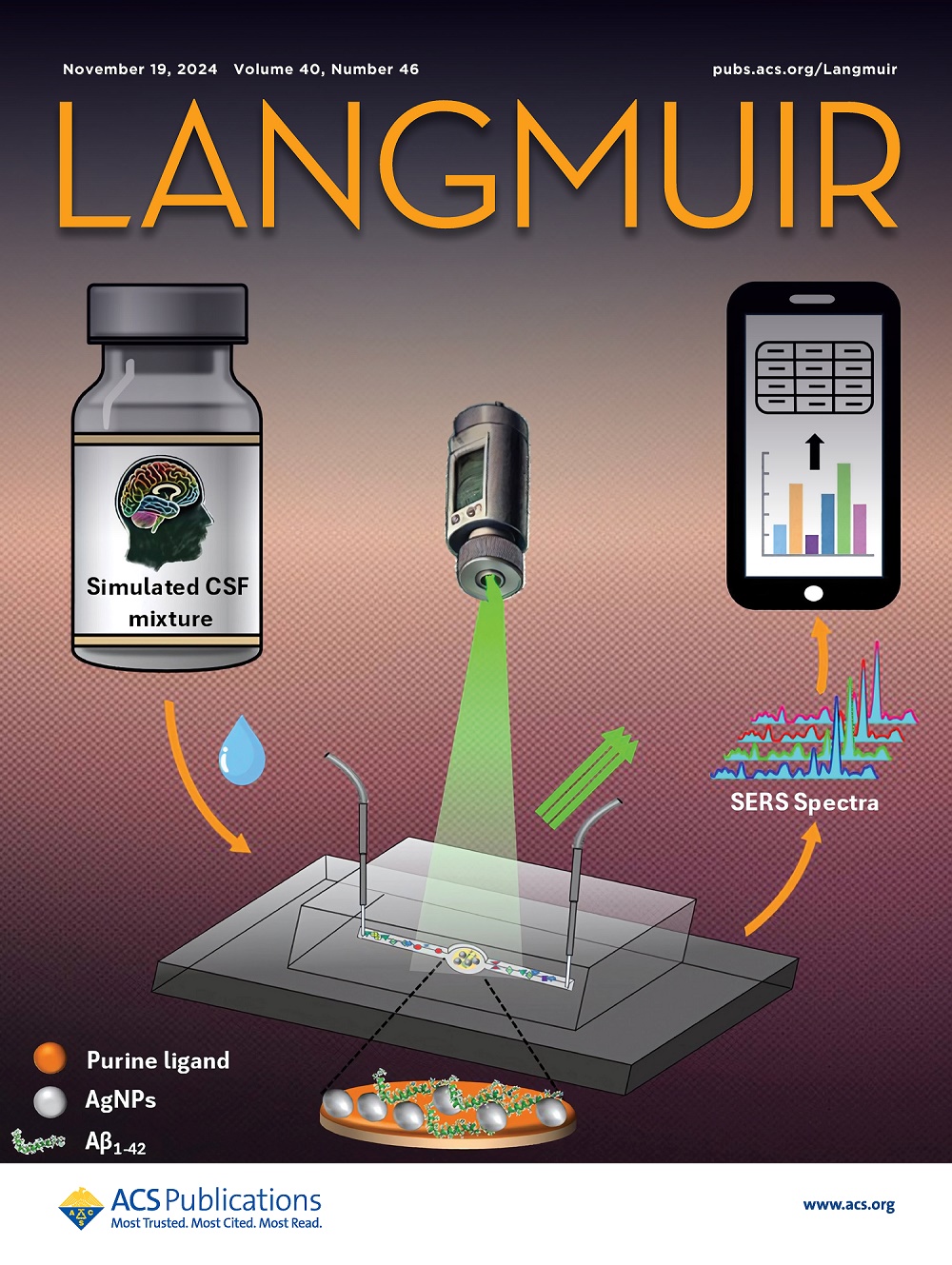Early Time Spreading Dynamics of Nanobubble-Laden Drops
IF 3.7
2区 化学
Q2 CHEMISTRY, MULTIDISCIPLINARY
引用次数: 0
Abstract
Nanobubbles, when dispersed in a liquid phase, may enhance mass transport, adsorption, and reactions in many industrial applications, such as fabrication of functional materials, drug delivery, water treatment, carbon dioxide capture, and surface decontamination. Here, we experimentally study the early time spreading dynamics of nanobubble-laden surfactant drops on a hydrophilic solid surface submerged in an oil phase. Along with recovering the retarding effects of surfactants on the early time wetting dynamics, we report that nanobubbles can weaken Marangoni stresses and consequently reduce the duration of the retardation regime. Remarkably, we find that the duration of this retardation regime (tr) exponentially decays with the nanobubble concentration in the dispersion (Nb) according to Nb ∼ log(1/tr). The micro-particle imaging velocimetry analysis of the flow field inside the drop indicates a large reduction in the magnitude of velocities in the presence of surface-active materials, confirming the existence of Marangoni flow that opposes droplet spreading. Our research introduces a simple approach to calculate the nanobubble concentrations in liquids and offers guidelines for controlling wetting dynamics.

求助全文
约1分钟内获得全文
求助全文
来源期刊

Langmuir
化学-材料科学:综合
CiteScore
6.50
自引率
10.30%
发文量
1464
审稿时长
2.1 months
期刊介绍:
Langmuir is an interdisciplinary journal publishing articles in the following subject categories:
Colloids: surfactants and self-assembly, dispersions, emulsions, foams
Interfaces: adsorption, reactions, films, forces
Biological Interfaces: biocolloids, biomolecular and biomimetic materials
Materials: nano- and mesostructured materials, polymers, gels, liquid crystals
Electrochemistry: interfacial charge transfer, charge transport, electrocatalysis, electrokinetic phenomena, bioelectrochemistry
Devices and Applications: sensors, fluidics, patterning, catalysis, photonic crystals
However, when high-impact, original work is submitted that does not fit within the above categories, decisions to accept or decline such papers will be based on one criteria: What Would Irving Do?
Langmuir ranks #2 in citations out of 136 journals in the category of Physical Chemistry with 113,157 total citations. The journal received an Impact Factor of 4.384*.
This journal is also indexed in the categories of Materials Science (ranked #1) and Multidisciplinary Chemistry (ranked #5).
 求助内容:
求助内容: 应助结果提醒方式:
应助结果提醒方式:


